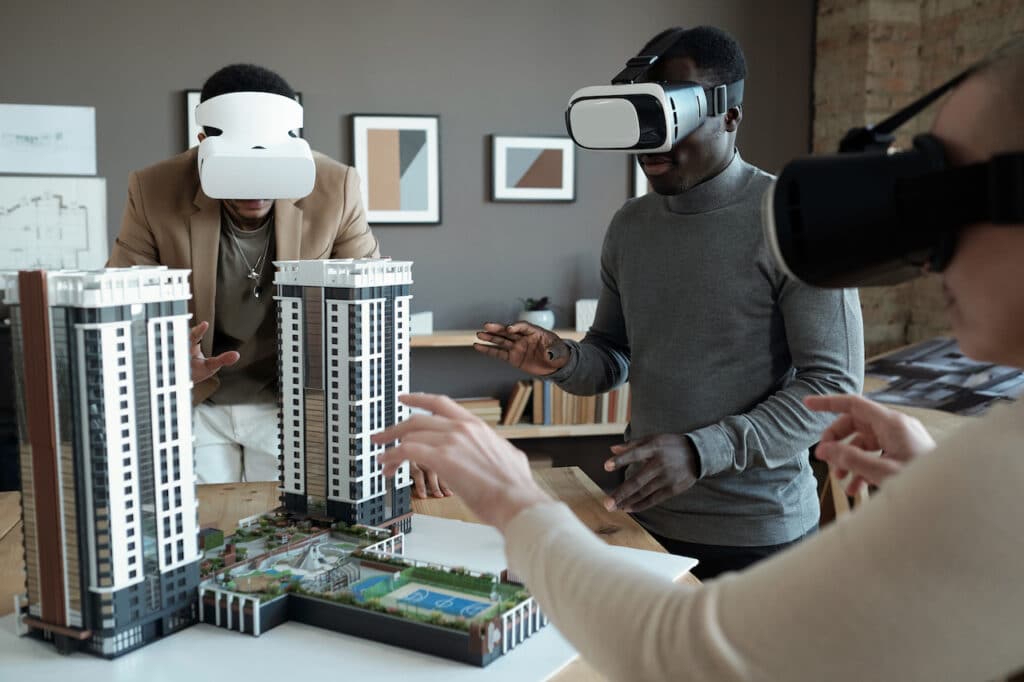10 of the Latest Tech Advancements in Architecture: What Architects Need to Know

Whether it’s more affordable housing or ultra-modern vertical cities, architects are turning to technology to help them design the structures of the future. Our experts are always on the lookout for the latest tech advancements in architecture that are being used to push the boundaries of what’s possible.
Here are 10 of the latest tools that architects and designers should be paying attention to.
1. 3D Printing: Amazing New Possibilities for Architecture
3D printing is one of the most exciting new technologies for architects. It has the potential to completely change the way they work, making it possible to create entire buildings in just a few hours. 3D printing technology has been around for a few years now, but it’s only recently that it has become more affordable and accurate enough to be used in architectural projects.
2. Virtual Reality: A New Way to Experience Architecture
Virtual reality is rapidly evolving and gaining in popularity among architects. It allows them to create a digital model of a building and then “walk through” it, seeing how it looks and feels from the inside. This can be useful for checking the feasibility of design ideas, as well as for marketing purposes.
3. Augmented Reality: Making Buildings Come Alive
Augmented reality is another tech advancement in architecture that is gaining traction. It is similar to virtual reality, but rather than creating a completely virtual environment, it inserts digital elements into the real world. This can be used to create some really impressive effects, such as making it look as if buildings are coming alive.
4. Blockchain: Reinventing the Way We Build
Blockchain is a technology that has the potential to revolutionize the way we build. It is a distributed database that allows for secure, transparent, and tamper-proof transactions.
With blockchain, architects would be able to track every stage of the construction process, from design to completion. This would help to ensure that everyone involved in the project is performing their duties properly and that no corners are being cut.
5. The Internet of Things: Connecting Buildings and People
The Internet of Things (IoT) is a term that refers to the connection of physical objects to the internet. This can be done in a variety of ways, such as through sensors, RFID tags, or QR codes. The purpose of the IoT is to enable objects to communicate with each other and with people. This can be used to help architects design efficient and unique buildings.
6. Artificial Intelligence: The Future of Architecture
For architects, AI presents several opportunities. For example, using it to help with the design process. AI can be used to generate new ideas for buildings or to help with the selection of materials and finishes. Additionally, AI could be used to carry out building inspections and diagnose problems.
7. Big Data: Creating Smarter Buildings
Big data is a term that refers to the large volume of data that is being collected and processed by businesses and organizations. Big data could be used to create “smart buildings” that are able to collect and analyze data about their inhabitants.
Additionally, big data could be used to create “building dashboards” that would allow architects to track the performance of their buildings. This would help them to identify problems and make changes accordingly.
8. Cloud Computing: Making Architecture More Accessible
Cloud computing allows architects to access files from anywhere in the world, without having to worry about storing them on their computers. This can be done through the use of cloud-based applications, or by using a cloud-based storage service.
9. Outsourced Cloud Hosting: The New Way to Collaborate
Even though outsourced cloud hosting has been around for years, it’s just gaining more traction in the architecture space. It’s a type of cloud computing in which businesses or organizations use the services of a third-party provider. This provider manages the infrastructure and security of the cloud environment.
Outsourcing cloud hosting can be beneficial for architects because it can help to reduce costs and increase efficiency. When architects outsource their cloud hosting, they can focus on their work, without having to worry about the management of the cloud environment.
10. Building Information Modeling (BIM): Smarter Building Design and Planning
Building information modeling (BIM) is a process that allows architects to create 3D models of their buildings. These models can be used to plan and design the building, as well as to track its progress during construction.
For architects, BIM can be used to create “virtual models” of buildings. This allows architects to test out different designs and see how they would look and function in real life. Additionally, BIM can be used to create “construction documents” that can be used by contractors during construction.
Modernize Your Technology with TrinWare
By harnessing these tech advancements in architecture while they’re up and coming, you can give your business a leg up on the competition. TrinWare has years of experience in migrating businesses to new platforms as well as developing custom applications. Let us take your business into the future with our innovative solutions. Contact us today to learn more about how we can help you.


